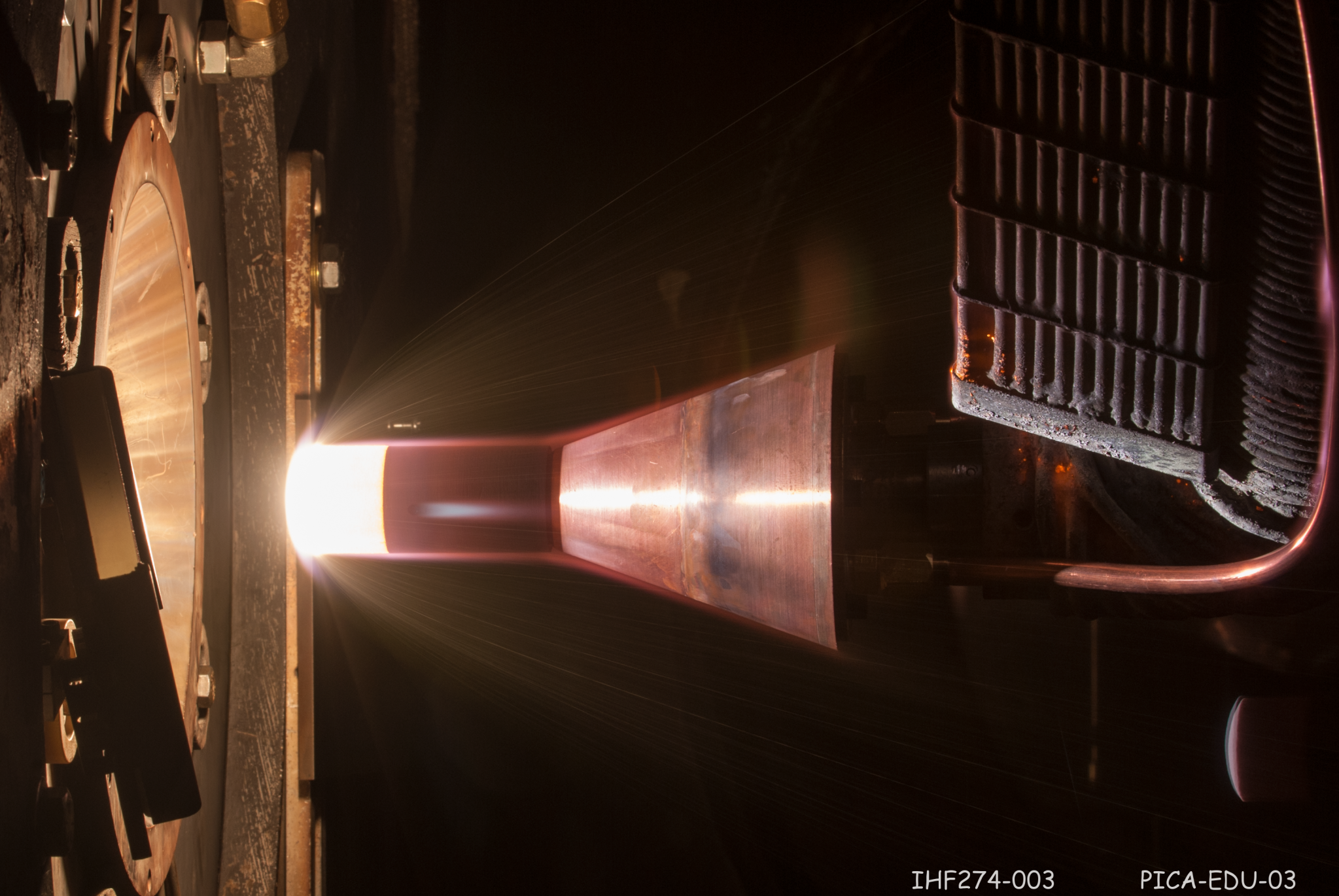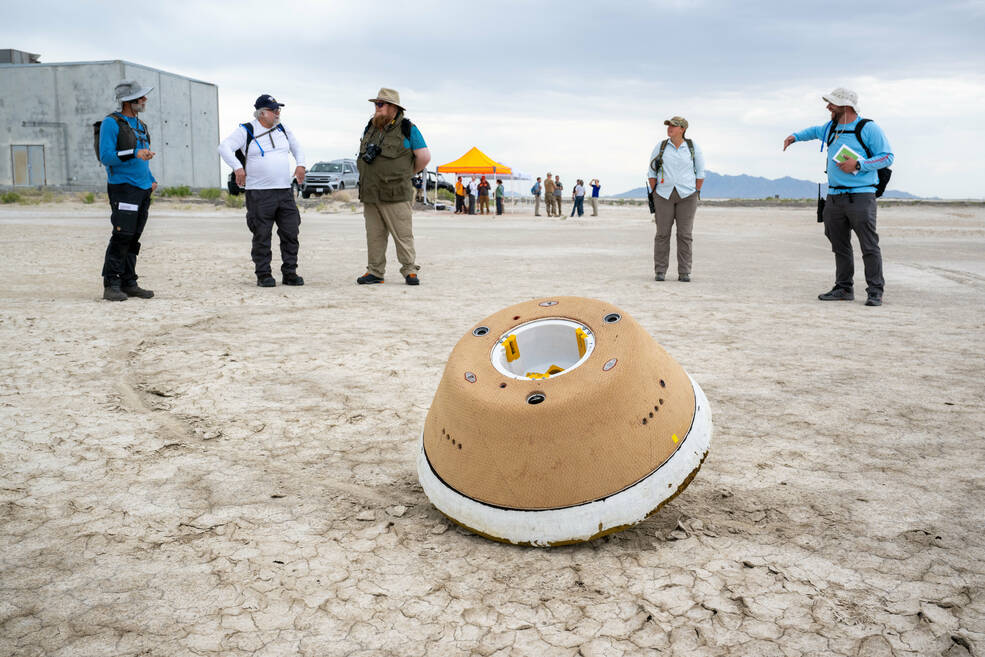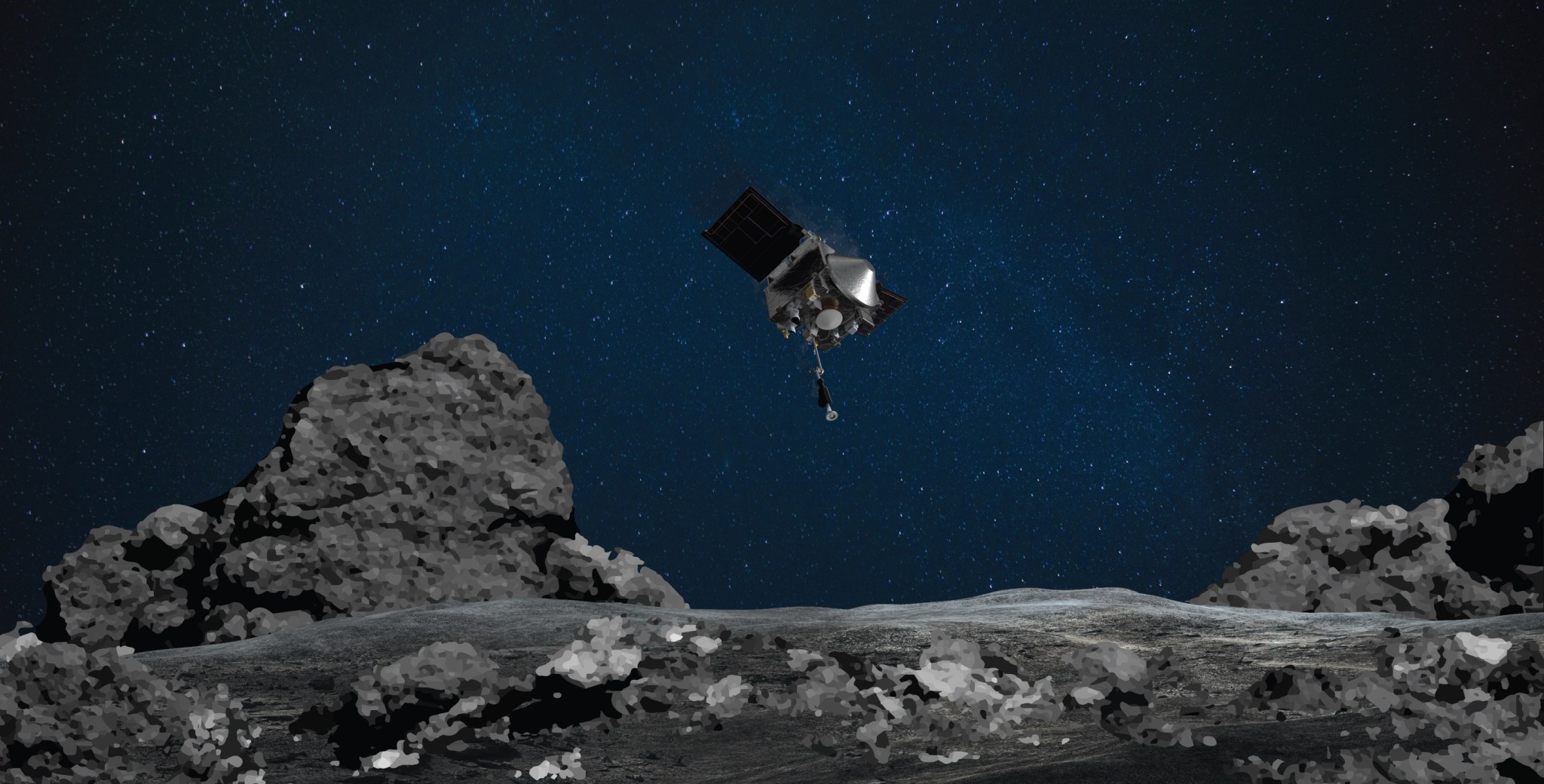Extraterrestrial rocks and dust – material scooped up from an asteroid – are scheduled to be delivered to Earth on Sept. 24, 2023. A safe landing in the Utah desert for the spacecraft carrying this bounty will mark the end of a seven-year journey for NASA’s OSIRIS-REx – short for the Origins, Spectral Interpretation, Resource Identification, and Security-Regolith Explorer – and the start of two intensive years of sample analysis activities for mission scientists on Earth.
Over the coming decades, scientists around the world will study the rocks and dust collected from the asteroid Bennu to learn about the formation of the solar system and the delivery of organic molecules to early Earth.
Bennu is also one of the most potentially hazardous asteroids for Earth impact, although the chances of impact in the 22nd century are only one in 1,750. Understanding the physical and chemical properties of asteroids like Bennu will be critical, should humanity need to mitigate impact hazards in the future.
Teams at NASA’s Ames Research Center in California’s Silicon Valley have played critical roles in preparing the mission for success and will continue to work on the OSIRIS-REx samples once they arrive. They helped design ways for the mission to collect high-quality samples, preserve them in pristine form, and develop a plan for the scientific community to study the essentially irreplaceable asteroid material. Ames experts also advised the mission on its thermal protection system – notably the heat shield that will protect the sample return capsule from the blistering heat of passing through Earth’s atmosphere.
Read on for more details of Ames’ contributions to OSIRIS-REx.
Preparing for an Asteroid Sample: From Canister to Curation
Ames researcher Scott Sandford has been involved with OSIRIS-REx since the earliest days of the mission. A major area of his work was in the design and testing of the air filter system on the sample return canister that has housed the precious asteroid material during its journey to Earth and will protect it from contamination when it lands on the surface.
The canister’s air filter was tested in Sandford’s lab before the mission launched. It will keep earthly contaminants out of the sample and, if the asteroid material is releasing any gases, the filter will trap them. If that’s happening, scientists could identify some components of Bennu. Sandford will coordinate a group of scientists in labs around the world to analyze the air filter after its return to Earth.
Sandford also leads the effort to analyze many components of the sample return capsule, both to assess potential sources of contamination in the samples and to assess the performance of the capsule.
Sandford’s sample curation work helped plan how the unique material from Bennu will be used. Three-quarters of it will be made available for study over the coming decades, while the remaining 25% may be distributed to researchers in efficient ways that let them address the mission’s scientific questions.
Withstanding the Heat of Earth Entry

The heat shield thermal protection system (TPS) is made of a material developed at Ames: phenolic-impregnated carbon ablator (PICA). PICA was first flown on NASA’s Stardust mission, which also delivered extraterrestrial material to Earth – from a comet.
The Stardust sample return capsule was nearly identical to that of OSIRIS-REx, so the latter mission was able to use the Earth-entry, descent, and landing systems successfully demonstrated by the earlier mission. Reusing many features of the Stardust capsule design, adjusted for the specific needs of the mission to Bennu, allowed OSIRIS-REx to reduce costs and the thermal protection team to leverage what they had learned from Stardust.
Ames helped qualify the PICA to withstand the extremely high temperatures experienced upon entering Earth’s atmosphere. They provided guidance to the mission on the PICA thickness needed to protect the samples and tested the heat shield material under simulated atmospheric re-entry conditions in Ames’ arc jet facilities to confirm thermal protection performance for the design. Ames experts in computational fluid dynamics supplied analysis that validated the aerothermal environments used in those tests.
They then worked with mission partner Lockheed Martin Space – who designed and built the spacecraft and capsule – to integrate the air filter and PICA elements onto the mission.
Soon after the spacecraft returns, members of Ames’ thermal protection team also plan to laser-scan the OSIRIS-REx heat shield in coordination with colleagues at NASA’s Johnson Space Center in Houston, Lockheed Martin, or both. What they learn about PICA’s performance, relative to predictions, can support future missions such as Mars Sample Return, that will return samples collected by NASA’s Mars Perseverance rover to Earth in the future.
Asteroid Sample Science
When the OSIRIS-REx capsule lands in the Utah desert, researcher Scott Sandford will be on the ground to help retrieve it. The chances of contaminants like soil and water entering the sample canister inside are extremely low. But, to be absolutely certain no one accidentally studies terrestrial materials thinking they are samples from Bennu, he will help collect samples from the environment where the capsule lands, for comparison with the asteroid material.
Later, Sandford will perform scientific studies of the Bennu samples themselves. His study will focus on two areas. He’ll assess what, if any, spacecraft-related contaminants got into the samples, such as material coming off the heat shield as it ablated, or “burned off,” during atmospheric entry. Sandford will also probe the samples for any organic compounds. Scientists estimate that Bennu is 4.5 billion years old and contains well-preserved materials, including complex organics, from the early solar system. Finding organics could tell us something about what roles materials of the early solar system may have played in delivering organic “ingredients of life” to the early Earth.
The techniques Sandford uses will allow him to search for compounds inside the Bennu samples. At Ames he’ll use infrared microspectroscopy to detect various kinds of organics in the samples that contain carbon, hydrogen, nitrogen, and oxygen. He will also work with colleagues to study samples using the Advanced Light Source facility, a specialized particle accelerator that generates bright beams of X-ray light for scientific research, located at Lawrence Berkeley National Laboratory in Berkeley, California. Both techniques provide information about the kinds of chemical bonds present in the samples’ organic compounds.
HORIS: A Study of Atmospheric Entry
NASA’s Langley Research Center in Hampton, Virginia, will manage an experiment taking advantage of the OSIRIS-REx sample arrival to study characteristics of re-entry through an atmosphere.
Four aircraft and teams at three ground sites will track the capsule’s trajectory on its way to the surface, using imaging and spectroscopy instruments. Data from the project, called Hypervelocity OSIRIS-REx Reentry Imaging & Spectroscopy (HORIS), will be used to validate and develop planetary entry models.
NASA’s Earth Science Project Office (ESPO), based at Ames, will provide operational and shipping support to two international ground teams by setting up work sites at three different locations in northern Nevada.

NASA’s Goddard Space Flight Center in Greenbelt, Maryland, provides overall mission management, systems engineering, and the safety and mission assurance for OSIRIS-REx. Dante Lauretta of the University of Arizona, Tucson, is the principal investigator. The university leads the science team and the mission’s science observation planning and data processing. Lockheed Martin Space in Littleton, Colorado, built the spacecraft and provides flight operations. Goddard and KinetX Aerospace are responsible for navigating the OSIRIS-REx spacecraft. Curation for OSIRIS-REx, including processing the sample when it arrives on Earth, will take place at NASA’s Johnson Space Center in Houston. International partnerships on this mission include the OSIRIS-REx Laser Altimeter instrument from CSA (the Canadian Space Agency) and asteroid sample science collaboration with JAXA’s (the Japan Aerospace Exploration Agency) Hayabusa2 mission. OSIRIS-REx is the third mission in NASA’s New Frontiers Program, managed by NASA’s Marshall Space Flight Center in Huntsville, Alabama, for the agency’s Science Mission Directorate in Washington.
Learn more about OSIRIS-REx:
- To learn more about the asteroid sample recovery mission visit: https://www.nasa.gov/osiris-rex
- Follow mission updates on the OSIRIS-REx mission blog: https://blogs.nasa.gov/osiris-rex/
For news media:
Members of the news media interested in covering this topic should reach out to the NASA Ames newsroom.


























